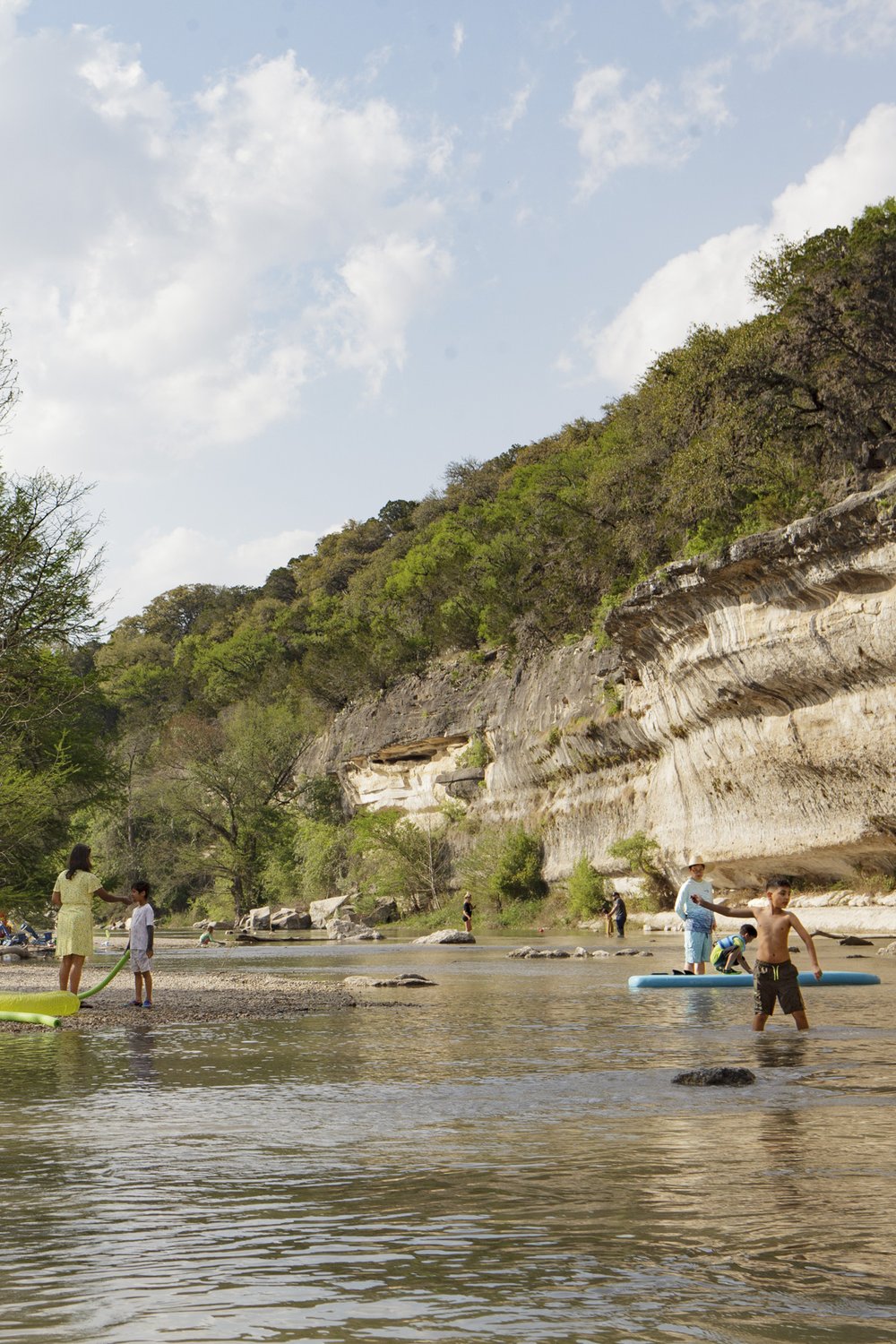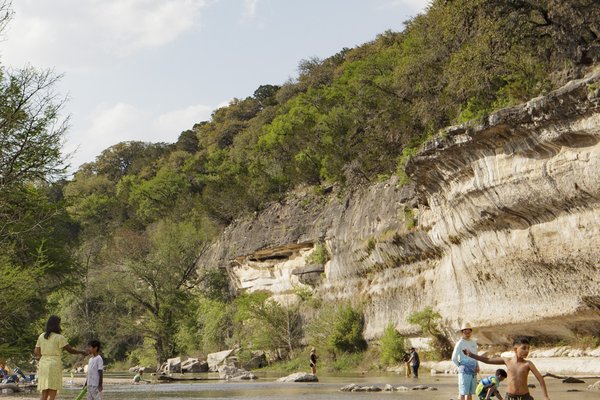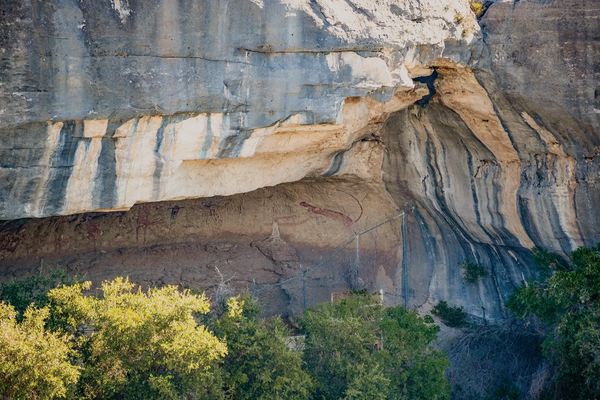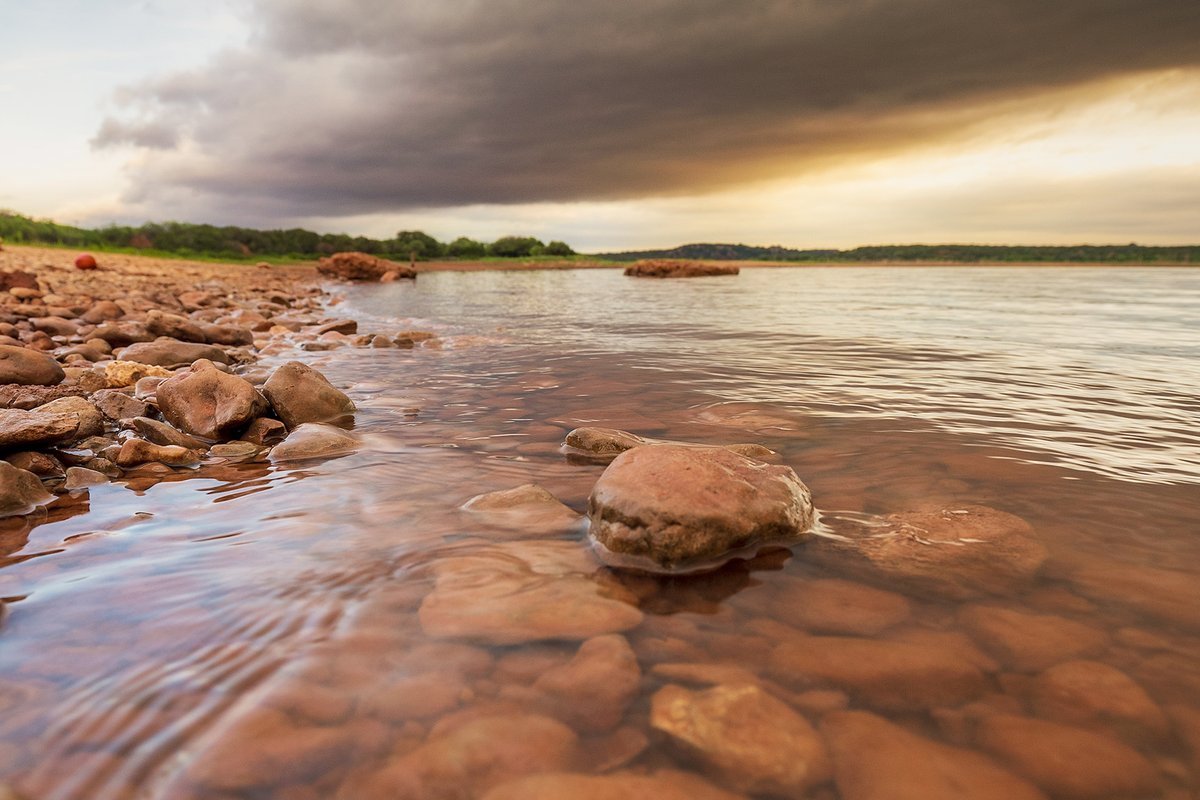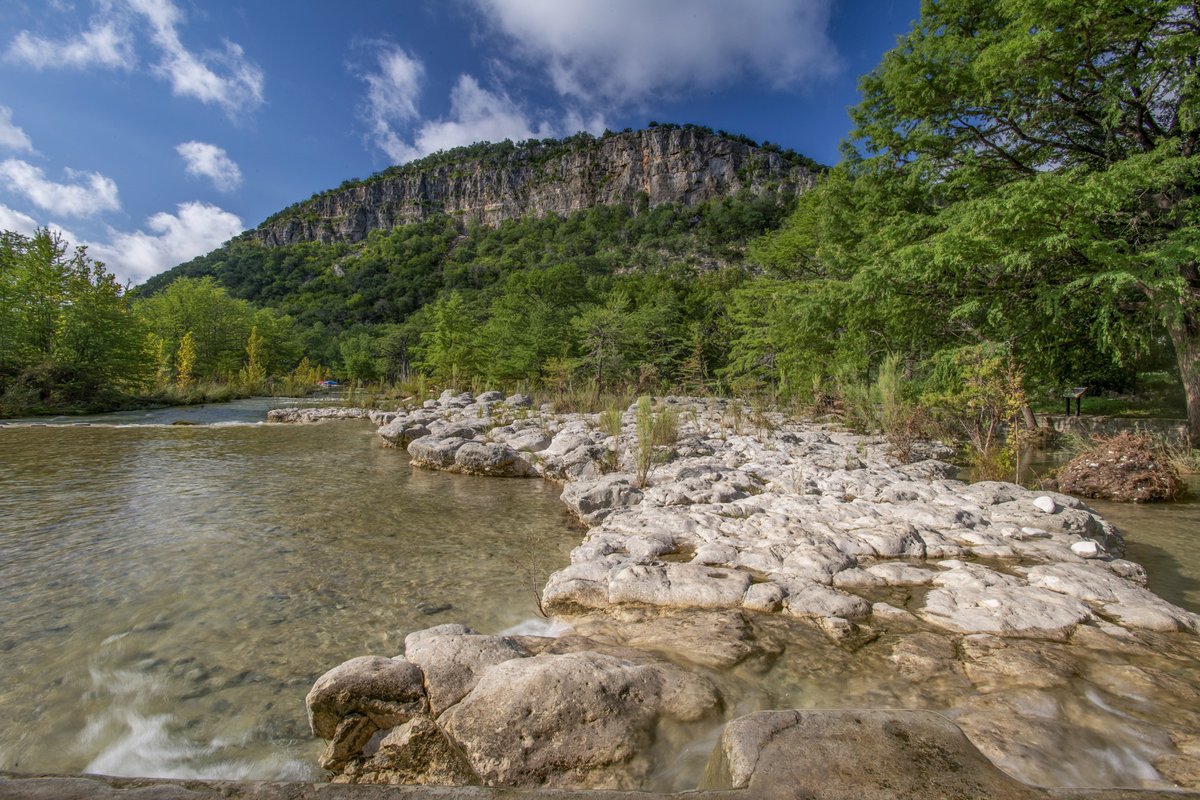Overview
Spanish explorers named the Guadalupe after another river far away from the Texas Hill Country — in Spain on the border of Portugal. The Spanish Guadalupe River is a tributary of the bigger Guadiana River. The names hearken back to Arabic occupation of Spain. The gua or wa sound is common in Arabic languages, and some historians think that the word guadalupe came from the Arabic wadi-al-lubben, meaning the “hidden river.” Others think that guadalupe is actually a combination of the Arabic wadi and the Latin lupe, in which wadi-lupe would mean “wolves’ river.”
Here in Texas — more than 5,000 miles away — our Guadalupe River is not hidden, nor will you see any wolves. But among the canopy of trees and the cool, blue-green water rushing through the park, it’s not hard to feel as if you’re part of something peaceful and historic while exploring Guadalupe River State Park. The sparkling water flanked by iconic bald cypress trees and limestone bluffs — like those found in Guadalupe River State Park — make the upper Guadalupe River one of the most scenic stretches in Texas. But park interpreter Jessica Bergner wants visitors to know that the park is more than just the river from which it takes its name. “Yes, you can swim, kayak, canoe and fish, but you can also hike, picnic, bird and wildlife watch, camp or attend a ranger or volunteer-led program,” she says. “The programs that the park offers target the interests of many different park visitors.”
Three Hikes
Easy: Bald Cypress Trail (0.6 miles)
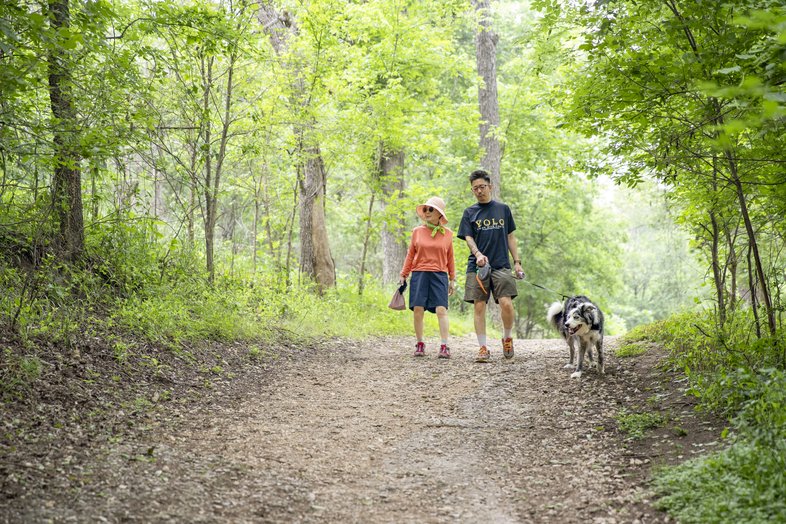
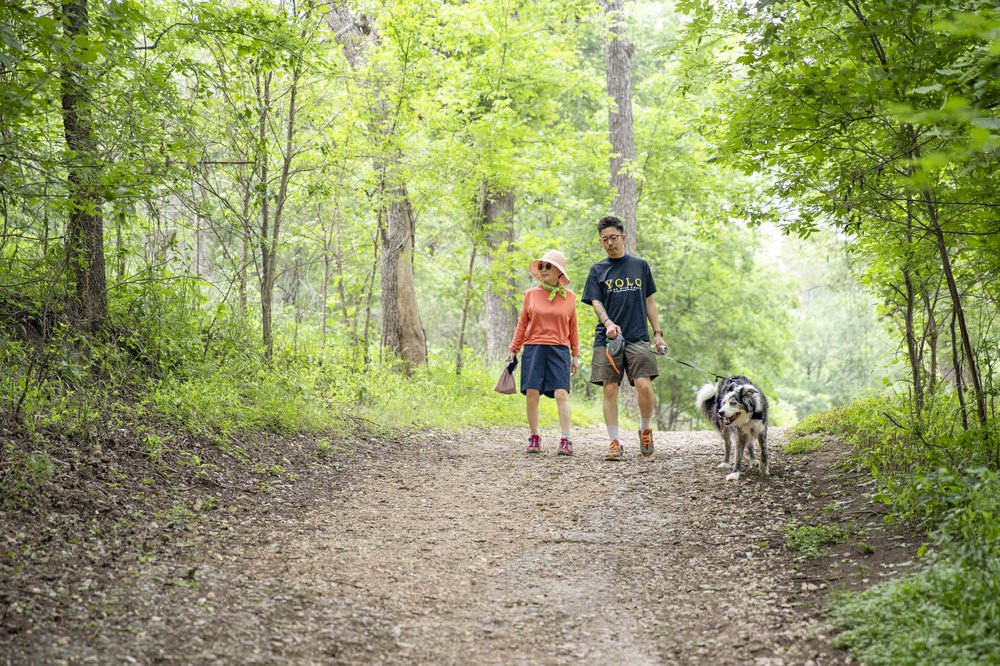
Bald Cypress Trail
Maegan Lanham | TPWD
Bald Cypress Trail
Maegan Lanham | TPWD
The Bald Cypress Trail is a great way to get a view of the park’s famous river, as it provides a walk along a significant portion of the park’s river frontage. It’s also a great way to get up close to the park’s bald cypress trees, those regal riverside inhabitants. Watch out for exposed cypress roots on the trail, which can cause a stumble if you aren’t paying attention!
Moderate: Painted Bunting Trail (3.1 miles)
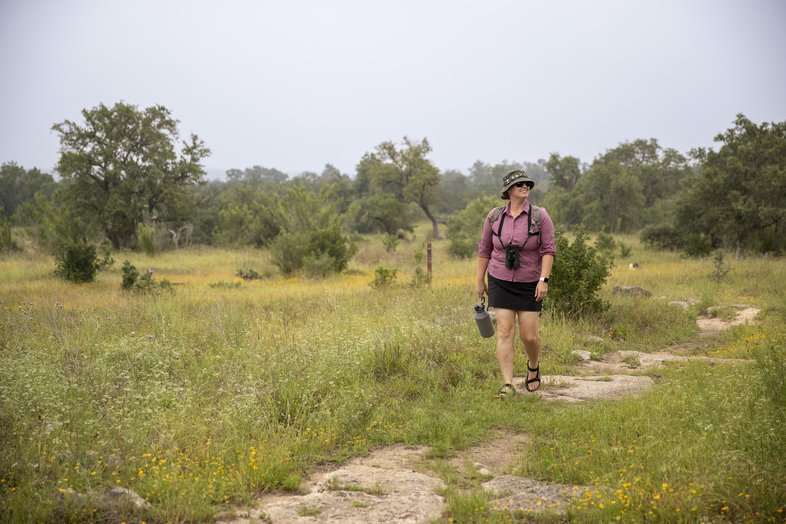
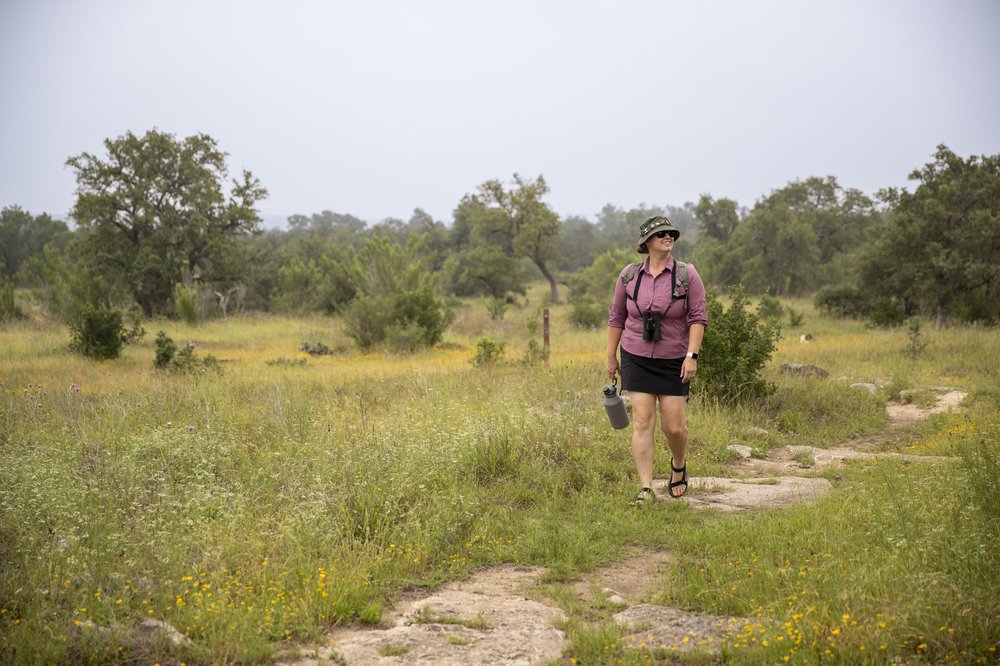
Painted Bunting Trail
Maegan Lanham | TPWD
Painted Bunting Trail
Maegan Lanham | TPWD
This is the longest trail in the park and is named for the multicolored songbird. This trail is mostly flat, with some rocky areas. Along the way, you’ll spot cacti, wildflowers (when the season is right) and maybe even some of the park’s wildlife, like wild turkeys or armadillos. Some parts of the trail are uncovered, so wear sunscreen, bring a hat and make sure you have enough water.
Challenging: Curry Creek Overlook (1.2 miles)
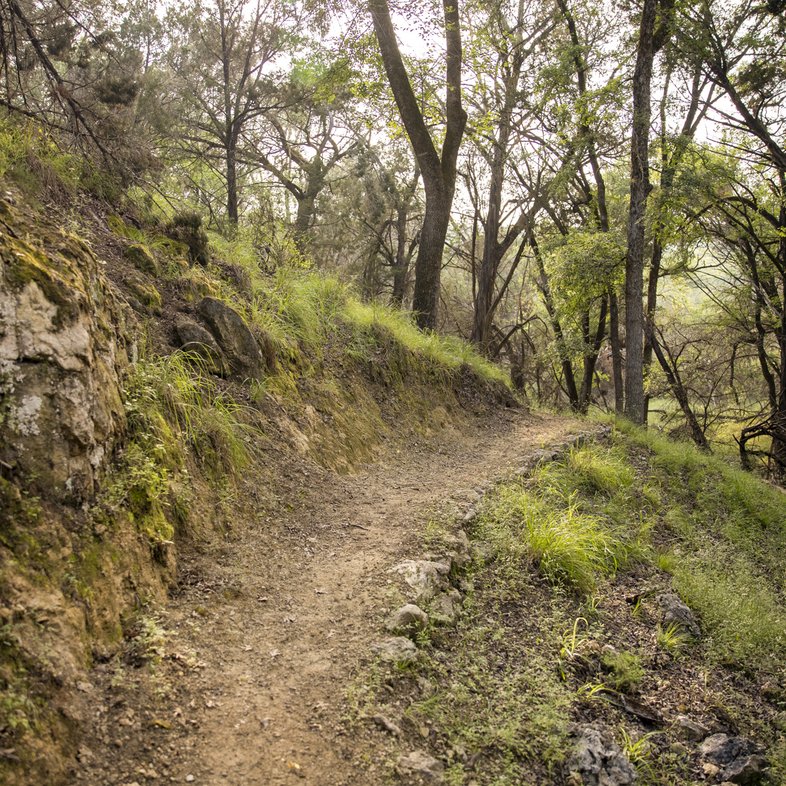
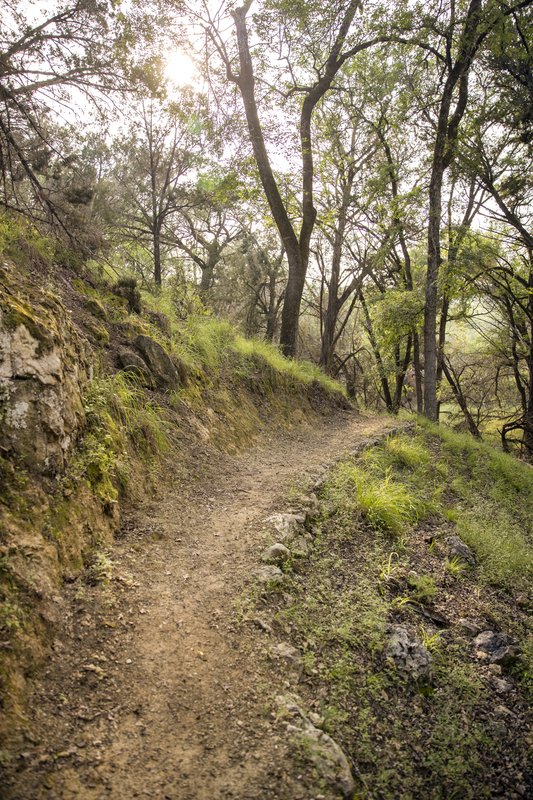
Curry Creek Overlook
Maegan Lanham | TPWD
Curry Creek Overlook
Maegan Lanham | TPWD
The Curry Creek Overlook is a 1.2-mile stretch of trail accessible from other trails in the Bauer Unit. While you’re out there, you’ll be rewarded with a gorgeous view. “The [Curry Creek Trail] offers stunning views of the surrounding landscape, including the Guadalupe River and the scenic Hill Country,” Ranger Bergner says. “The overlook provides a picturesque vantage point where visitors can pause and enjoy the natural beauty.”
Overnight Stays

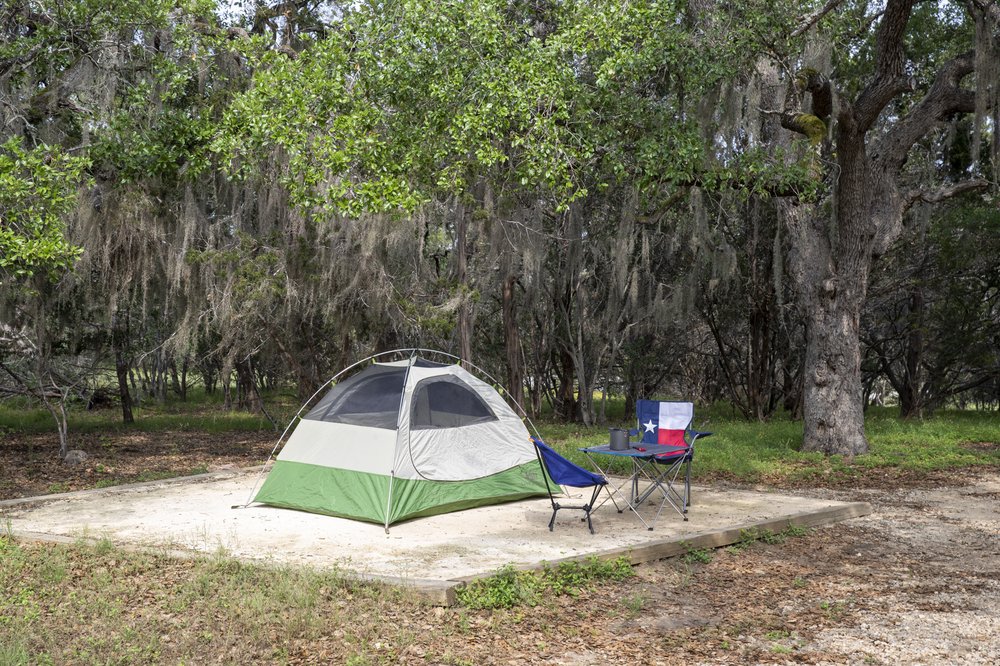
Maegan Lanham | TPWD
Maegan Lanham | TPWD
Campsites with electricity: There are 85 campsites with electricity split over two campgrounds, Turkey Sink and Cedar Sage. While both Turkey Sink and Cedar Sage have electric hook-ups, Cedar Sage is better for smaller vehicles (the sites have a 20-foot maximum trailer length), while Turkey Sink can accommodate bigger vehicles.
Walk-in campsites with water: There are nine walk-in sites in the Wagon Ford campground, located on a terrace above the Guadalupe River, for tent campers only. A water spigot and restrooms are available. Campers who select a walk-in site will have to carry their gear 50-100 yards from the parking area to their site.
Park staff recommendation: “I like campsite 24,” Ranger Tanguma says. “It’s gorgeous. The sunrise hits the trees and lights up the Spanish moss and it’s absolutely gorgeous.”
Selfie Spots


Sonja Sommerfeld | TPWD
Sonja Sommerfeld | TPWD
Floating on an Inner Tube
Floating the river is quintessentially Texan, and the Guadalupe River is a great place to do so. Snap a selfie from your inner tube while enjoying the pretty blue-green hues of the river.
With a Tangle of Cypress Roots
The bald cypress trees that line the banks of the Guadalupe River are large and magnificent to witness. On the Bald Cypress Trail, you can spot large tangles of the exposed roots, which make for an interesting photo.
On a Big Rock in the Water
At the swimming areas, you’ll notice large rocks in the middle of the water, sometimes big enough for multiple people to lie down comfortably. Wade out to one of these rocks and set up a blanket for a place to sunbathe and jump in and out of the water. This is also a great place for a unique selfie surrounded on all sides by the river — just don’t drop your phone!
Park Staff Story
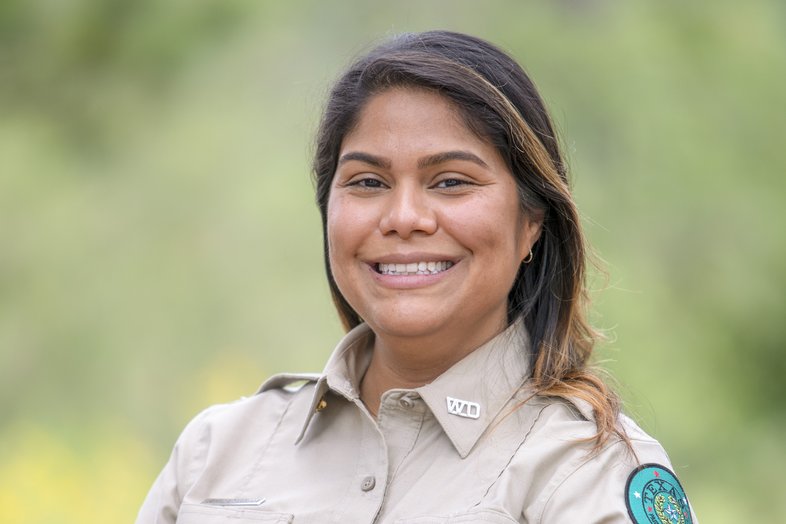
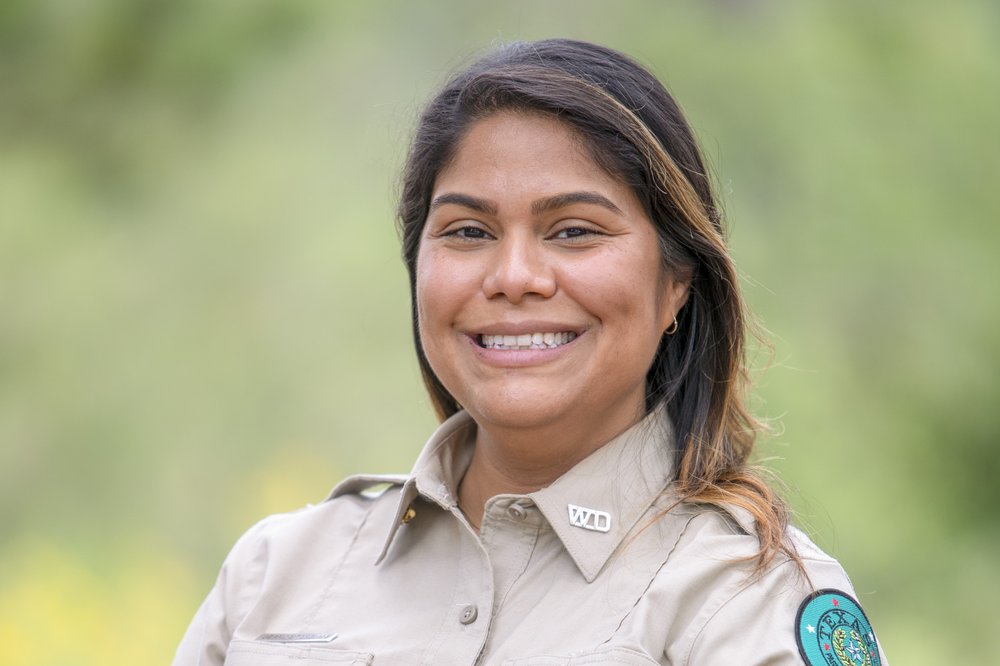
Jessica Tanguma
Maegan Lanham | TPWD
Jessica Tanguma
Maegan Lanham | TPWD
“I was here during Hispanic Heritage Month and I was out at the Star Party when a woman named Josie Guitierrez approached me wearing a Latino Outdoors T-shirt and asked me if I would be interested in swearing in all of the junior rangers for the Latino Outdoors camping excursion, and I was like, heck yes! I worked it out with the superintendent to run down and swear in the junior rangers and eat some pan dulce. I swore in about 20 junior rangers of all different ages. I got to chat with them and hang out and answer questions, which was really precious. I found out later that I was the first Latina ranger to interact with their group, so it was just such a highlight for me and a reminder of why I do this.” – Ranger Tanguma
Wildlife
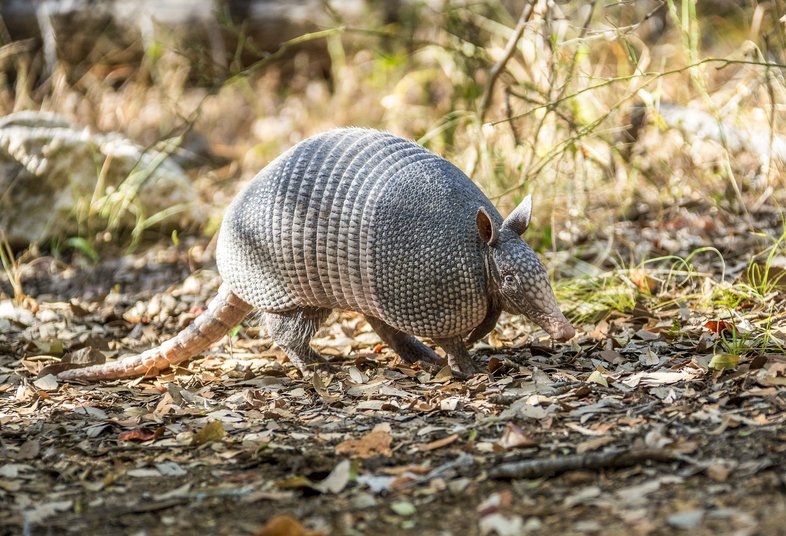
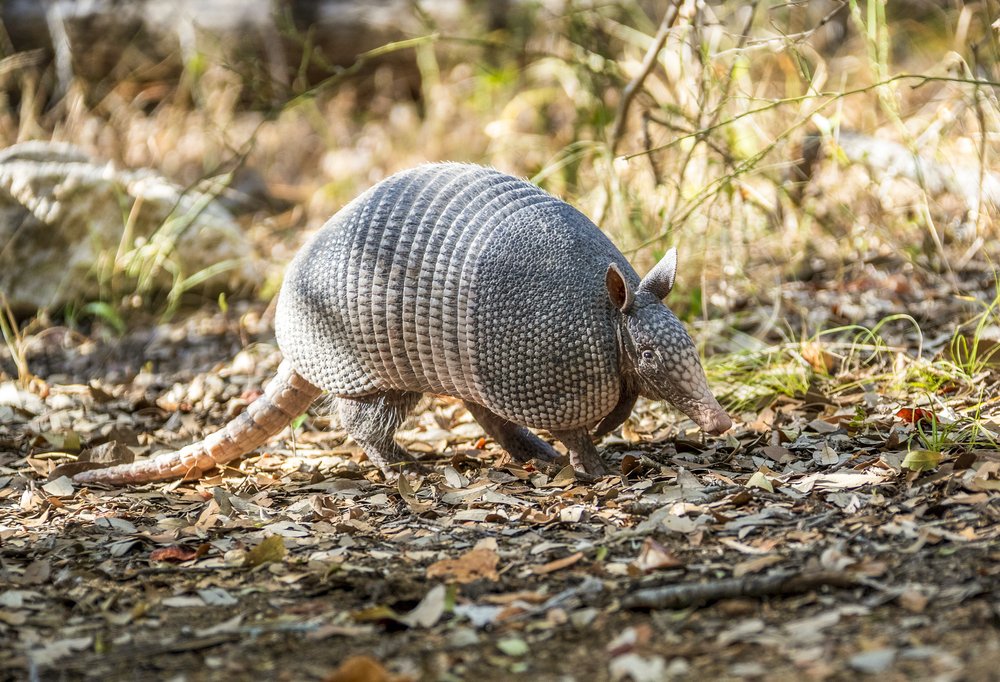
Armadillo
Maegan Lanham | TPWD
Armadillo
Maegan Lanham | TPWD
Porcupine: “Porcupines in Texas? I had no idea.” Ranger Tanguma says. “I saw one fall out of a tree once, and that was pretty hilarious.” You might just see one of these spiky rodents on your trip to Guadalupe River.
Armadillo: Armadillos are an icon of Texas, and you can encounter them at the park. You can hear the soft rustles of armadillos searching for a meal while hiking on many trails within the park.
Golden-cheeked warbler: Golden-cheeked warblers come to Texas in March to build their nests and stay through the summer. They nest only in Central Texas.
Gray fox: “I was out the trail one morning and all of a sudden I jumped about three feet in the air when a very loud bark was directed my way,” Ranger Bergner says. “Turned out to be a gray fox that was trying to nap and I got a little too close to its bed.”
Plan Your Visit
Mix and match these activities to make the most of your trip, whether you’re there for a full weekend or only a day.
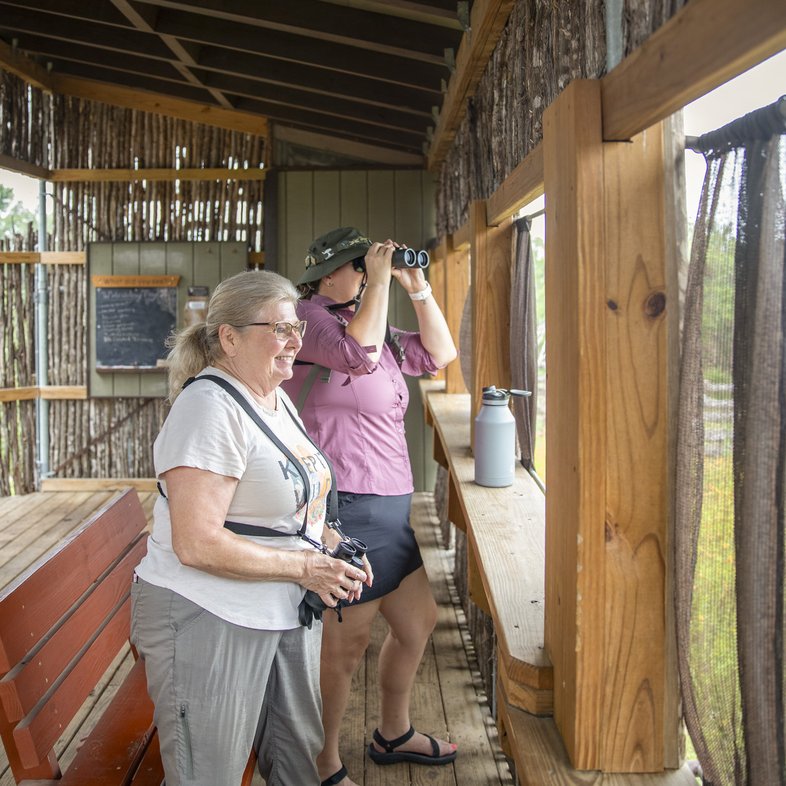
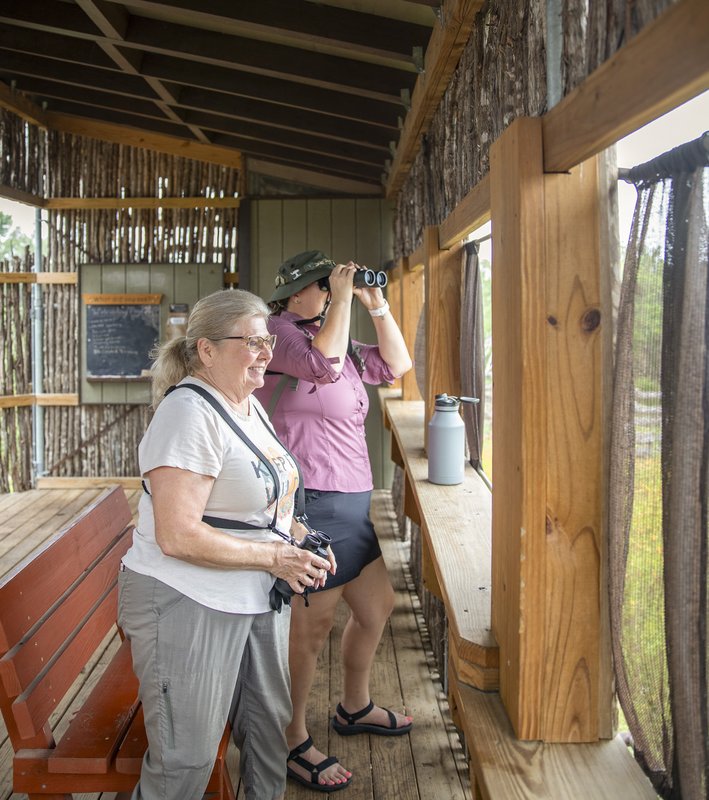
Birding at the bird blind.
Maegan Lanham | TPWD
Birding at the bird blind.
Maegan Lanham | TPWD
Look for birds: Guadalupe River State Park is home to many interesting bird species. One of the more notable is the endangered golden-cheeked warbler, which sports a bright yellow head. Grab a birding checklist and see how many you can spot from the bird blind or trails.
Hike: Guadalupe River State Park boasts 13 miles of hiking trails of myriad lengths and difficulties. Embark on a short, flat walk along the river to enjoy the sounds of rushing water and the chirping of birds, or descend into a valley of oak trees via a steep downhill trail — just remember, you’ve got to climb back up!
Swim: With four miles of river frontage and a dedicated area for swimmers to enjoy, the park attracts many people for a dip in its namesake body of water. The swimming area is bordered by one of the park’s large limestone bluffs, created over millennia by erosion.
Attend a ranger program: State park rangers and volunteers host many weekly ranger programs, where attendees can learn more about the park. The programs offer everything from nature walks to journaling sessions to star parties; they are a great way to learn more about the beauty of the park from people who see it firsthand every day.
Float or paddle: Grab your paddleboard, kayak or inner tube and get out on the river. “When the river’s up, definitely grab a kayak and get out there,” says Ranger Tanguma. “It’s gorgeous to paddle or even just tube among the cypress trees.”
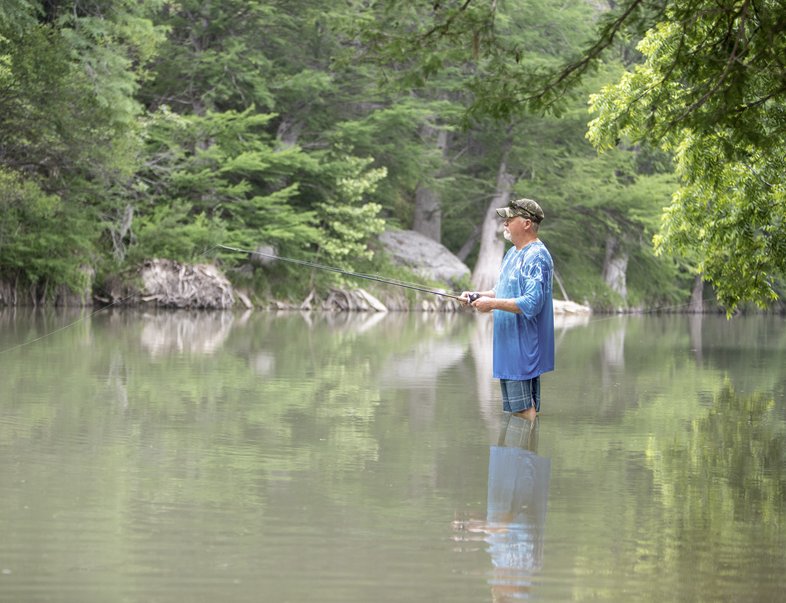
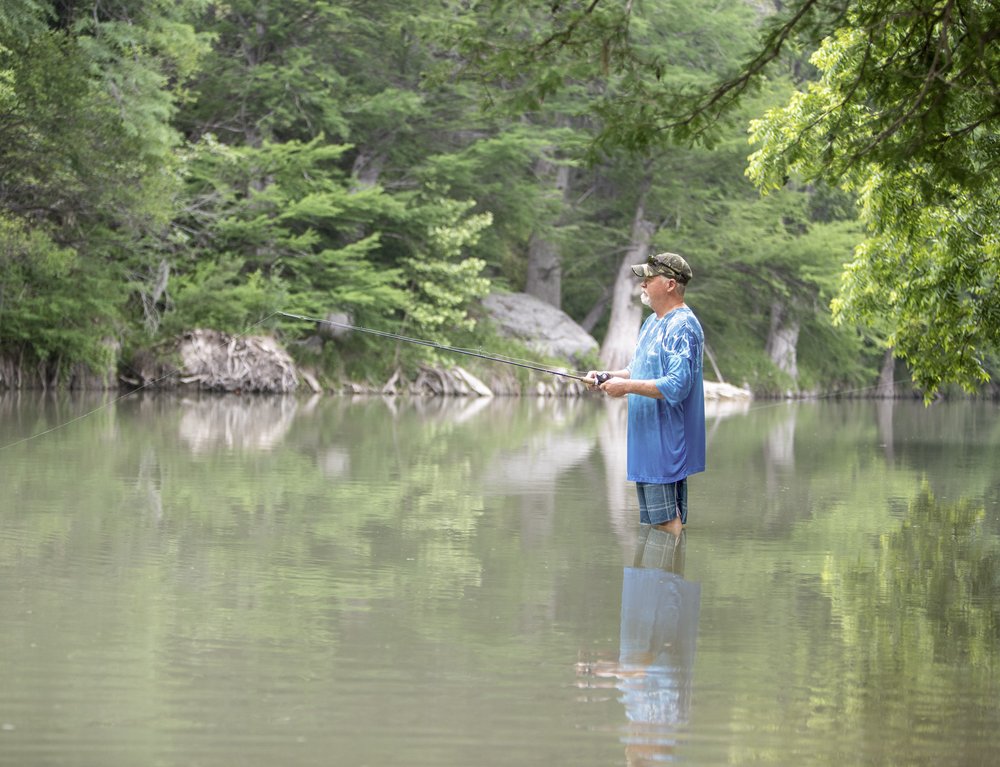
Fishing in the river.
Maegan Lanham | TPWD
Fishing in the river.
Maegan Lanham | TPWD
Fish: If you take a dip in the Guadalupe River, you might feel some of the river’s piscine residents nipping at your toes. Anglers can target several types of fish, including sunfish, bass and trout.
Visit Honey Creek State Natural Area: Adjacent to Guadalupe River State Park, Honey Creek State Natural Area offers more opportunity to experience the beauty of the Hill Country. Guided tours meet at the Rust House at 9 a.m. Saturday mornings and select Sundays; reservations are required and can be made in advance (no pets allowed).
Bike: All of the park’s trails are open to both hikers and bikers, plus there are plenty of road biking opportunities on the park’s paved roads. Most of the mountain biking trails are intermediate- to advanced-level trails, but beginners can still enjoy them with the proper precautions.
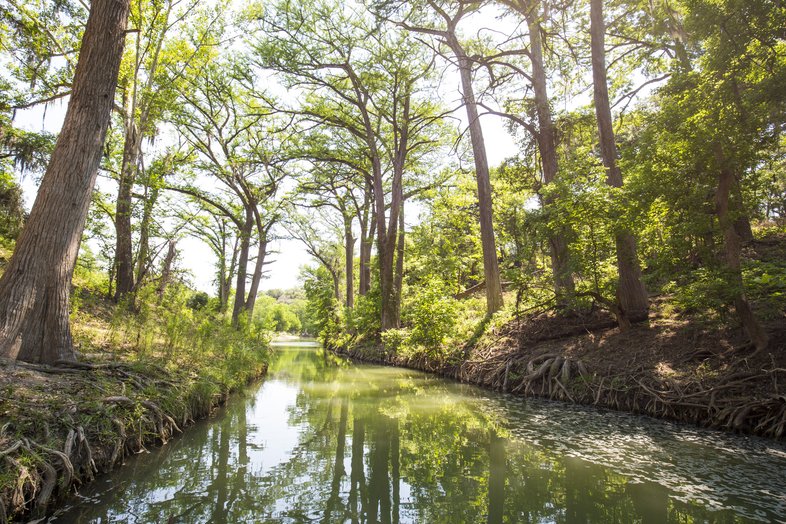
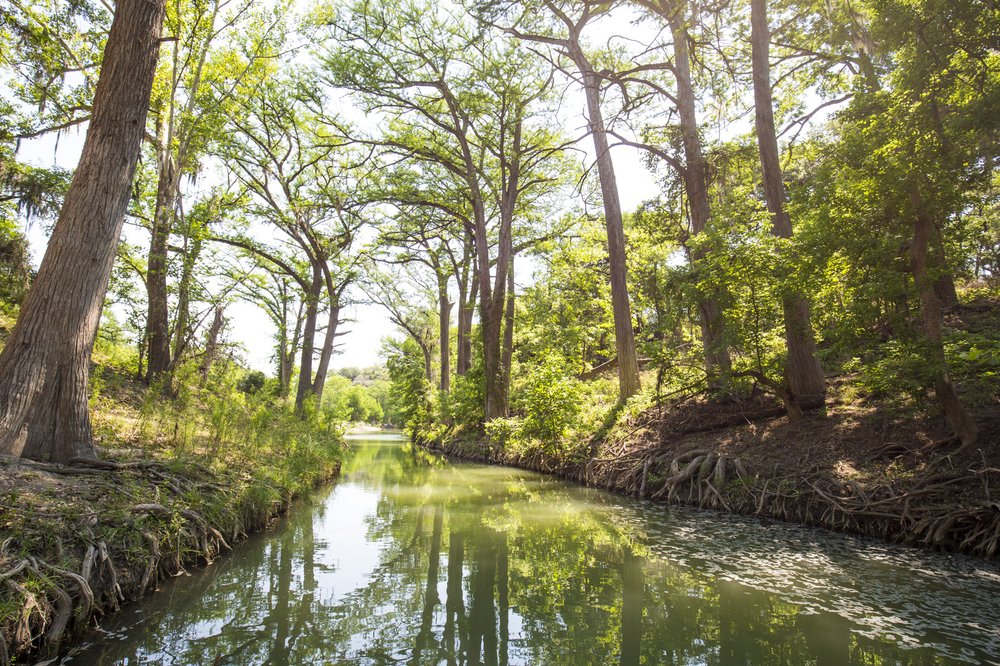
Honey Creek State Natural Area
Sonja Sommerfeld | TPWD
Honey Creek State Natural Area
Sonja Sommerfeld | TPWD
